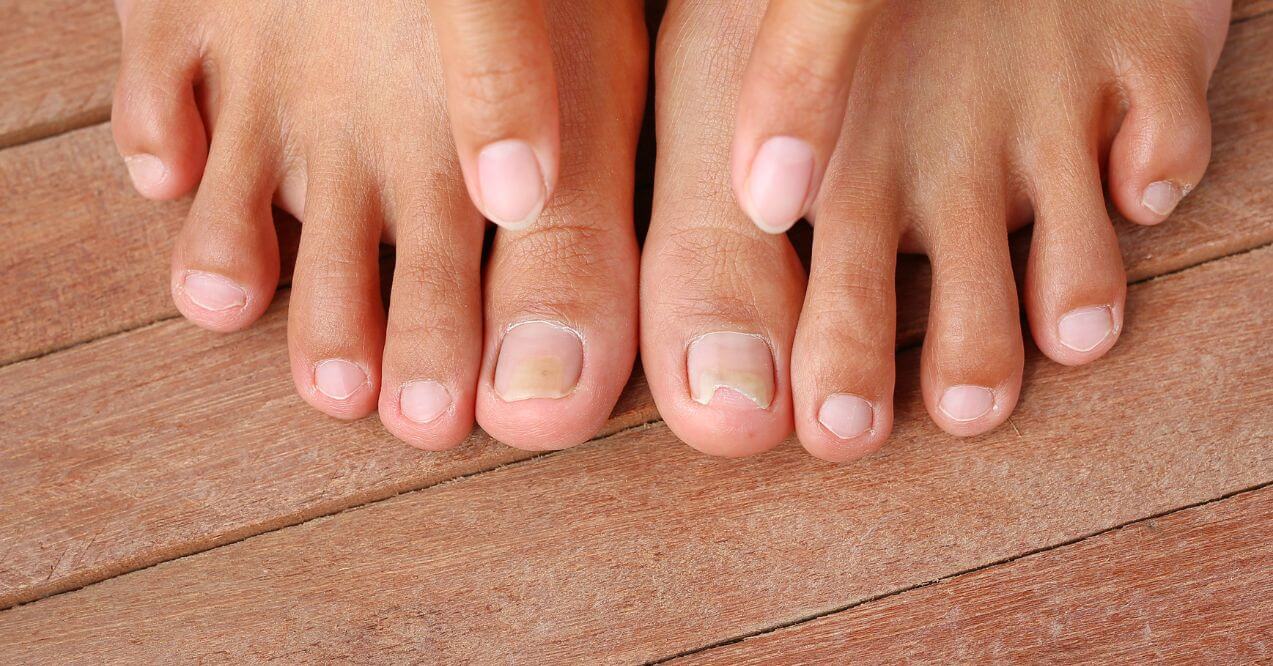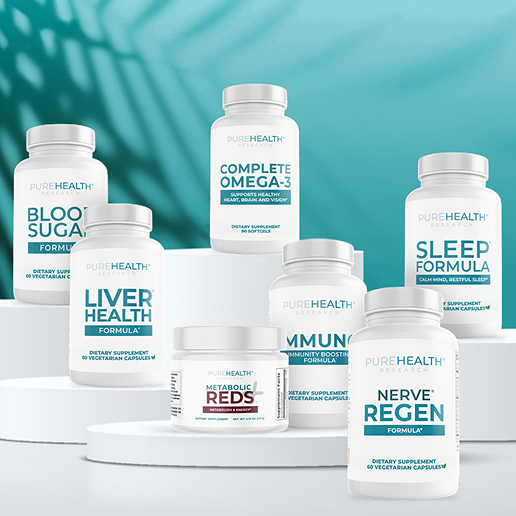How Nail Polish Damage Toenails (3 Signs to Watch For)
Don't let nail polish damage toenails! Learn 3 crucial signs and expert advice for maintaining gorgeous, healthy feet year-round.


Nail polish damage toenails more often than many realize. While adorning our toes with vibrant colors can be a fun way to express ourselves, you have to be aware of the potential risks associated with prolonged use of nail polish.
Today we will explore the signs of damage to toenails from nail polish, explain the underlying causes, and provide practical advice for maintaining healthy toenails while still enjoying your favorite colors. Discover how to protect your toenails and spot the warning signs of nail polish-related damage.
Signs of Toenail Damage from Nail Polish
Here are three key indicators that your gel nail polish may be harming your toenails:
1. Yellow Toenails
Yellow toenails from nail polish are a common issue that many people face. This discoloration occurs when pigments from darker shades of polish seep into the nail plate, causing a yellowish tint. While this is often a cosmetic concern, it can sometimes indicate more serious problems.
Causes of yellow toenails:
- Prolonged use of dark-colored nail polish
- Lack of proper base coat application
- Failure to give nails a “breathing” period between polishes
Yellow toenail polish staining differs from more serious conditions like keratin granulations. Staining is usually uniform and fades over time, while granulations appear as white patches on the nail surface.
2. Brittle or Weak Toenails

Nail polish damage toenails by weakening their structure over time. The chemicals in both polish and removers can strip the nails of their natural oils, leading to dryness, brittleness, and weakness.
Signs of brittle or weak toenails:
- Easily chipping or peeling nails
- Nails that bend or break more easily than usual
- Rough or uneven nail texture
The risk of thinning and splitting increases with frequent polish use and removal. This weakening can make nails more susceptible to other issues, such as fungal infections or trauma.
3. White Spots on Toenails
White spots on toenails can be alarming, but they’re not always a sign of serious concern. These spots, often called leukonychia, can have various causes, including nail polish use.
Possible causes of white spots:
- Keratin granulations from prolonged polish wear
- Minor trauma to the nail
- Allergic reactions to nail polish ingredients
It’s important to differentiate between cosmetic white spots and more serious conditions like white toenail fungus. Discolored toenails from polish typically appear as superficial white patches, while fungal infections often cause thickening, crumbling, or separation of the nail from the nail bed.
So, what does toenail fungus look like? It’s characterized by:
- Thickened nails
- Yellowish or brownish discoloration
- Crumbling or ragged nail edges
- Foul odor
What Are Keratin Granulations on Toenails?
Keratin granulations are a common result of prolonged nail polish use. They appear as white, powdery patches on the nail surface after removing polish. These granulations occur when the top layer of the nail (composed of keratin) becomes dehydrated and begins to break down.
Characteristics of keratin granulations:
- White, powdery appearance
- Usually disappear when oil is applied to the nail
- Often mistaken for fungal infections
While keratin granulations are generally harmless, they can weaken the nail and make it more susceptible to other issues.
How Nail Polish Damages Your Toenails Over Time
Long-term use of nail polish can lead to various issues that go beyond surface-level damage. These potential problems can help you make informed decisions about your nail care routine.
1. Nail Polish Can Dry Out Your Nails

Continuous use of nail polish can lead to dry, thin, and brittle nails. This occurs because:
- Nail polish forms a barrier that prevents nails from absorbing moisture
- Chemicals in polish and removers strip natural oils from the nails
- Frequent polish changes expose nails to drying agents more often
Dry nails are more prone to breaking, peeling, and other forms of damage, which can compromise overall nail health.
2. Nail Polish Can Cause Allergic Reactions
Some individuals may experience allergic reactions to ingredients commonly found in nail polishes. These reactions can cause discomfort and potentially lead to more serious nail issues. Common allergens in nail polish:
- Formaldehyde
- Toluene
- Dibutyl phthalate
Symptoms of an allergic reaction may include:
- Redness around the nail bed
- Swelling of the surrounding skin
- Itching or burning sensation
If you experience these symptoms, discontinue use of the polish and consider switching to hypoallergenic alternatives.
3. Nail Polish Can Cause Nail Peeling or Splitting

The cycle of applying and removing nail polish can take a toll on your toenails, leading to peeling or splitting. This damage occurs due to:
- Mechanical stress from filing and buffing during polish application
- Chemical stress from harsh ingredients in polish and removers
- Weakening of the nail structure over time
Nail polish damage toenails by compromising their integrity, making them more susceptible to further damage and potential infections.
Should You Take a Break from Toenail Polish?
Taking regular breaks from nail polish can significantly benefit the health of your toenails. These breaks allow your nails to:
- Regain moisture and natural oils
- Strengthen their structure
- Recover from any minor damage
Consider implementing a nail care routine that includes polish-free periods. During these breaks, focus on nourishing your nails with natural oils or strengthening treatments.
To support nail health from within, you might consider skin supplements designed to promote stronger nails and overall wellness. One such product is Fungus Eliminator by PureHealth Research, endorsed by Dr. Holly Lucille, ND.
This supplement combines natural ingredients that are believed to support nail health and overall body function:
- Oregano and Basil Leaf – Known for their antibacterial properties
- Garlic Bulb and Apple Cider Vinegar – Traditional remedies for various health concerns
- Turmeric Root – Believed to support anti fungal function
Is It Safe To Wear Nail Polish All Summer?
While it’s tempting to keep your toes polished throughout the summer months, continuous wear can pose risks to your nail health. Summer activities and conditions can exacerbate nail polish-related issues:
- Increased exposure to water (pools, beaches) can cause polish to chip or peel
- Sand can get trapped between the polish and nail, potentially causing damage
- UV exposure can affect some nail polish formulations
To maintain healthy toenails during summer:
- Take regular breaks from polish
- Use a UV-protective top coat when wearing open-toed shoes
- Keep nails trimmed and clean to prevent debris accumulation
Safe Nail Polish Alternatives

For those concerned about damage to toenails from nail polish, there are safer alternatives available:
- “5-free” or “10-free” nail polishes – These products exclude common harmful chemicals
- Water-based polishes – Generally gentler on nails and easier to remove
- Breathable nail polishes – Allow air and moisture to reach the nail
When choosing toe nail polish, look for products that prioritize nail health alongside color and shine.
How to Protect Your Toenails from Summer Heat and Chlorine?
Summer activities can put additional stress on your toenails, especially when combined with nail polish use. To protect your toenails:
- Wear water shoes in public pools to minimize chlorine exposure
- Apply a protective base coat before polish to create a barrier
- Moisturize nails and cuticles regularly to combat dryness from heat and chlorine
Maintaining healthy nails is an important part of overall foot care. Addressing persistent nail issues promptly is crucial for long-term nail health. If you’re wondering how to get rid of toenail fungus, which can be exacerbated by summer conditions and nail polish use, consider these steps:
- Keep feet clean and dry
- Trim nails regularly and file down thickened areas
- Use antifungal treatments as recommended by a healthcare professional
- Allow nails to breathe by taking breaks from nail polish
Conclusion
The impact of nail polish damage toenails can be significant, but with proper care and awareness, you can enjoy colorful nails while maintaining their health. How to know if toenail fungus is dying? By paying attention to signs like yellowing, brittleness, and white spots, you can take proactive steps to protect your toenails.
Give your nails regular breaks from polish, choose safer alternatives, and adjust your nail care routine with the changing seasons. With mindful practices, you can have both beautiful and healthy toenails. Your nails will benefit from your attentive care, rewarding you with strength and natural beauty.
Yes, nail polish can damage toenails. Prolonged use can lead to yellowing, brittleness, and weakness. Chemicals in polish and removers can dry out nails, making them prone to splitting and peeling. Frequent application and removal can also cause mechanical stress, potentially leading to long-term nail damage.
To treat nail polish damage, give your toenails a break from polish. Moisturize nails and cuticles regularly with natural oils. Use a nail strengthening treatment. Trim nails properly and file gently. Consider taking biotin supplements for nail health. If severe damage persists, consult a healthcare professional.
Generally, yes. Nails can “breathe” without polish, absorbing moisture and nutrients more easily. They’re less exposed to harsh chemicals and mechanical stress from application and removal. However, occasional polish use is fine for most people when combined with proper nail care and regular polish-free periods.
Sign up for our Healthy Living newsletter!
Advertisement. This site offers health, wellness, fitness and nutritional information and is designed for educational purposes only. You should not rely on this information as a substitute for, nor does it replace, professional medical advice, diagnosis, or treatment. If you have any concerns or questions about your health, you should always consult with a physician or other health-care professional. Do not disregard, avoid or delay obtaining medical or health related advice from your health-care professional because of something you may have read on this site. The use of any information provided on this site is solely at your own risk.











